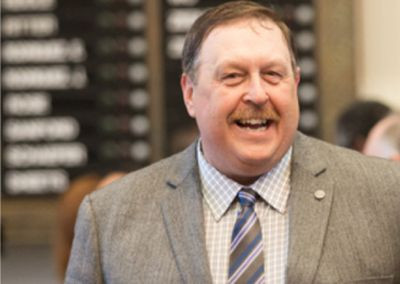There's an opportunity to take the next step, and make the Texas State Guard even better
By David Erinakes
AUSTIN, Texas (Texas Insider Report) — The last two decades have proven the need for trained "Surge Forces" in Texas to meet disasters such as Hurricanes, Tornadoes, Flooding, and other missions such as Border Operations. And the latest Special Session's legislative actions call for forces like the Texas State Guard (TXSG) to meet the needs of Texas.
The challenge for Texas, however, is that these surge forces often cost millions to prepare, or are delayed in deployment due to various factors.
These include training time, logistics, the need for Emergency Management situational awareness, and Incident Command System (ICS) training.
 Recruiting, training, and growing the Texas State Guard (TXSG) must be done in advance of disasters – but currently the TXSG struggles to recruit the next generation of local heroes.
Recruiting, training, and growing the Texas State Guard (TXSG) must be done in advance of disasters – but currently the TXSG struggles to recruit the next generation of local heroes.On a tight budget, the State of Texas must carefully balance its ability to rapidly expand support with targeted investment, ensuring it can respond as directed by the Governor.
In last week's Part I Article, we looked at how Texas has an opportunity to take the next step in making this already professionalized force even better able to respond to Texas Emergencies. And to prepare to achieve the Low Cost-High Reward Surge Force the state needs, we'll hear below from Texas State Sen. Phil King and State Representative Cecil Bell, Jr., both of whom have been active in the TXSG.
It is important to note; Title 32 State Defense Forces (SDFs) are Federally and State approved under the control of Governors. The Texas State Guard is considered a highly professional example of those forces and the Premier State Defense force in the United States with the proven ability to enhance State and local mission success across a variety of special state needs – including logistics support, shelter management, augmenting Emergency Operation Centers at the State and local levels, Law Enforcement, Engineering Support, Medical Support, Legal Support, Swift Water Rescue and generally anything asked of its service members.
-
Remember, the Texas State Guard, unlike the National Guard, cannot be federalized or deployed overseas and is uniquely under the control of the Governor.
-
Additionally, they are trained in FEMA's Incident Command System (ICS) and the National Incident Management System (NIMS), making them interoperable with both civil and military responders.
"In the 24 months before this writing, a review of State Defense Forces has shown them to have proven their value repeatedly:
- The Florida State Guard deployed on three back-to-back hurricanes in 2023 and 2024 — Hurricanes Idalia, Nicole, and Pablo. Their missions included staffing and managing emergency shelters, operating logistics hubs in storm-impacted counties, water rescues, assisting with evacuations, and delivering critical supplies. Florida SDF personnel were embedded in emergency operations centers and worked alongside local law enforcement and National Guard elements. They also
 crossed state lines under the Emergency Management Assistance Compact to support storm recovery and shelter operations in Georgia and North Carolina.
crossed state lines under the Emergency Management Assistance Compact to support storm recovery and shelter operations in Georgia and North Carolina.
- The Georgia SDF was activated for Hurricane Helene in September and October 2024. Its personnel conducted debris clearance, distributed food and water, and supported shelter operations in rural South Georgia communities. They operated in tandem with the Georgia National Guard, helping reopen critical transportation routes and restoring access to hospitals and emergency services.
- The South Carolina State Guard responded twice in rapid succession in late 2024 — first during Hurricane Helene, providing traffic control and communications augmentation, and later in response to historic flooding in Orangeburg County. In the flood mission, SDF personnel conducted sandbagging, water rescue support, and damage assessments, relieving overburdened local fire departments and public safety agencies.
- The Alaska SDF deployed in May 2023 alongside the Alaska National Guard to assist in flood recovery operations in Circle, Alaska, a remote community cut off by washed-out roads. Defense Force members helped establish field communications, coordinated supply airlifts, and provided humanitarian aid, underscoring the importance of having locally governed, rapidly deployable forces in geographically isolated and underserved regions.
- The Texas State Guard has played a critical role in both disaster response and border security operations. In 2023 and 2024, personnel supported Operation Lone Star by assisting state and local law enforcement in humanitarian relief and infrastructure protection along the U.S.–Mexico border. During Winter Storm Uri response operations, Texas State Guard units conducted wellness checks, distributed food and water, supported warming shelters, and helped restore communications across rural counties. Their integrated support across state agencies illustrates how SDFs can augment both emergency management and public
 safety missions. These are not anomalies. They are a pattern of success."
safety missions. These are not anomalies. They are a pattern of success."
Texas State Senator Phil King (right,) pointed out:
“It was important to be noted that the TXSG has had hundreds of its service members deployed to border for years and their mission there to support Border Operations. The Judge Advocates, for example, have been handling legal affairs for the National Guard at border. There are also judges serving.
"We must also note the professionals such as engineers and physicians among others who are service members of serious professional experience including those with prior military and law enforcement credentials.”
"We must also note the professionals such as engineers and physicians among others who are service members of serious professional experience including those with prior military and law enforcement credentials.”
In Texas, there is an opportunity to take the next step in making this already professionalized force even better able to respond to Texas Emergencies.
Texas House Bill 101 was passed and signed by the Governor in 2025. This legislation is pivotal to achieving the Low Cost-High Reward Surge Force the state needs.
Chairman Cecil Bell, Jr. (below right,) is a State Representative – who has been active in TXSG and now chairs the powerful House Intergovernmental Affairs Committee – remarked:
“Texas must be ready before disaster strikes, and the Texas State Guard is our frontline surge force. They are trained, committed, and uniquely Texan.
 “It is imperative that Texas grow this professional, community-rooted force into the rapid response capability our state urgently needs.”
“It is imperative that Texas grow this professional, community-rooted force into the rapid response capability our state urgently needs.”
 “It is imperative that Texas grow this professional, community-rooted force into the rapid response capability our state urgently needs.”
“It is imperative that Texas grow this professional, community-rooted force into the rapid response capability our state urgently needs.”The committee's recommendations should consider how to enhance the efficiency and operational superiority of integrating the TXSG with local and State agencies as needed. Simply put, how does Texas respond better and faster?
The Time to Exchange Business Cards is not in an Emergency
Considerations should include;
- Codification of SDF roles in the state emergency operations plan, aligned to NIMS and ICS standards.
- Advocating for grant eligibility and flexible use of federal resources for Title 32–authorized missions.
- Permanently embedding Qualified TXSG members in the Texas Dept. of Emergency Management (TDEM) at all levels, including senior management so that agency leaders have an internal, well-staffed, well-qualified surge force.
- Permanent embedded service members at the Forest Service’s Emergency Operations Center, deployed for preparation-training for the yearly emergencies they address.
- Permanently embed Qualified TXSG members with the Texas Game Wardens to help address a variety of issues that are addressed daily.
- Consider embedding Senior TXSG members and support staff with the Governor’s and DPS’s’ Homeland Security Unit to provide instant support when needed and to provide support on an ongoing basis.
- Allowing these agencies to "call up" these surge forces for training and deployment the instant they are required so they have very well-qualified and trained service members they can count on day one, hour one.
- Allow these agencies to coordinate with TDEM to redirect surge forces over time to meet emerging needs better so that they remain fast and flexible long term.
The changes can be made quickly and with minimal costs of State Active-Duty days (SAD), but what is the proper limitation, or what the military calls' Mission Stoppers'? Well, it is simply manpower. The TXSG needs help recruiting.
First steps are critical here. To achieve this, a plan is needed to expand the force to the 4,000-5,000 service members Governor Abbott initially called for, which is approximately 20% of the State's current Total National Guard size. It should include:
- Expanded reach,
- Social media,
- Active recruiting all over the State, and
- Potentially sharing space with National Guard Recruiting.
- In addition, they should embed recruiters with the state's HQ recruiting command to better manage exiting/End of Enlistment members of the Army and Air National Guard who may be leaving due to job or family commitments, versus an up-tempo operational posture and deployments, but who have a passion still to serve Texas.
It is time for Texas to lead again and ensure they always can be counted upon as Texans Helping Texans.
 David Erinakes is a Senior Legislative Reporter and consultant who formerly worked in the Texas Legislature.
David Erinakes is a Senior Legislative Reporter and consultant who formerly worked in the Texas Legislature.























